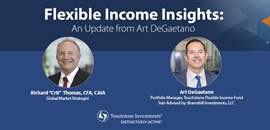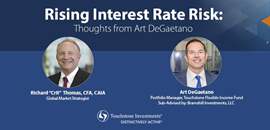Dollar Weakness and International Exposure
Are We Looking at a Secular Opportunity?
We’ve been getting a lot of questions about the dollar and international equities. The main focus is whether we are on the cusp of a secular shift toward international equities, similar to the trend seen in the early 2000s when the dollar fell and international stocks outperformed. Given that dollar weakness benefits U.S. investors in international equities, we thought it would be helpful to review that period to assess any parallels.
The US dollar peaked in early 2002 and troughed in 2008. Several factors contributed to its decline:
- Large and growing US trade deficit: A widening trade deficit increases the supply of dollars abroad, creating a supply/demand imbalance. In the first quarter of 2025 our trade deficit widened by the greatest amount ever. This was partly due to gold imports as well as companies stockpiling goods before the tariffs. We believe it is unlikely the trade balance will worsen significantly from here due to tariffs.
- Growing US fiscal deficit: 2001 tax cuts and increased military spending expanded the fiscal deficit. A growing fiscal deficit can create uncertainty about a country’s financial condition and its commitment to servicing its debt. Today, we see near-term risk of a budget deal that could further widen the deficit. We believe that a widening deficit is unsustainable longer-term, though we have yet to see the political will to address this issue.
- Loose monetary policy: The Fed cut rates from 6.5% in 2000 down to 1% in 2003, making US Treasuries less attractive. Currently the Fed characterizes policy as ‘restrictive’ and is moving toward rate normalization – not full-on stimulation – which is a key difference. Meanwhile the ECB appears to be on a more aggressive easing path which is likely to keep their rates lower than in the US.
- Emerging market boom: China’s rapid industrialization lifted commodity prices and drove emerging market strength, contributing to a rotation away from the dollar. No comparable dynamic exists today, with China facing structural headwinds and significant tariffs.
- Emergence of the euro: Introduced in 2002, the euro provided a new credible alternative to the dollar. The euro has not dethroned the dollar mainly due to the lack of a single bond market for the euro; investors still face country-specific risk.
- Value of the dollar: In the early 2000s estimates of fair value indicate the dollar was overvalued versus most currencies. Today, the dollar looks similarly overvalued on a fair value basis, though based on shorter term drivers (e.g. interest rate differentials) the dollar should be trading higher.
Other Factors to Consider:
- Dot-com bust: The collapse of tech stocks reduced foreign appetite for US equities. There are some parallels today with AI and the Mag-7, but today's correction lacks the severity and widespread bankruptcies seen during the dot-com bust.
- Economic recovery: By 2003, the global economy was beginning an extended recovery favoring the Value style--boosting materials, energy, and financials. International indexes, with heavier value tilts, outperformed US stocks. Today, international indexes still lean toward value, but the macroeconomic backdrop is notably different.
- Relative valuation: Both US and international stocks were washed out by 2003. Relative valuation was not a driver of international stock outperformance. Today, the relative valuation picture favors international stocks.
Conclusion
While there are a few parallels to the early 2000s, they are not compelling enough to suggest a repeat. Although we have seen dollar outflows, they are mainly concentrated in Europe – not broad based. We see our growing fiscal deficit (and debt burden) as the most relevant parallel today.
Unlike the early 2000s, we believe the main driver behind the recent dollar weakness is the aggressive, isolationist stance the Trump administration has taken with US allies. It is likely that this is partly as a reflection of Trump’s negotiation style—which is to come in hard at the start and then ease off during negotiations. We believe that the trend from here is likely to be less brash though Trump’s approach may have created some lasting damage.
The world does appear to be moving toward greater multipolarity, and many parties are searching for a way to reduce dollar dependance. Global fragmentation remains a risk, however, there are no obvious dollar substitutes, suggesting a more glacial pace away from the dollar.
Even if we don’t see a repeat of the early 2000s, that doesn’t mean investors should avoid international equities. While the dollar may not enter a period of secular decline, it is unlikely to re-initiate a steady march higher that would impair returns for US investors in foreign stocks. We believe international diversification is important, especially in the current environment.
U.S. Dollar Index During the Early 2000s

Source: Bloomberg. Monthly data from 2000 through 2008
The Touchstone Asset Allocation Committee (TAAC) consisting of Crit Thomas, CFA, CAIA – Global Market Strategist, Erik M. Aarts, CIMA - Vice President, Senior Fixed Income Strategist, and Tim Paulin, CFA - Senior Vice President Investment Research and Product Management, develops in-depth asset allocation guidance using established and evolving methodologies, inputs and analysis and communicates its methods, findings and guidance to stakeholders. TAAC uses different approaches in its development of Strategic Allocation and Tactical Allocation that are designed to add value for financial professionals and their clients. TAAC meets regularly to assess market conditions and conducts deep dive analyses on specific asset classes which are delivered via the Asset Allocation Summary document. Please contact your Touchstone representative or call 800-638-8194 for more information.
A Word About Risk
Fixed-income securities can experience reduced liquidity during certain market events, lose their value as interest rates rise and are subject to credit risk which is the risk of deterioration in the financial condition of an issuer and/ or general economic conditions that can cause the issuer to not make timely payments of principal and interest also causing the securities to decline in value and an investor can lose principal. When interest rates rise, the price of debt securities generally falls. Longer term securities are generally more volatile. Investment grade debt securities may be downgraded by a Nationally Recognized Statistical Rating Organization to below investment grade status. Non-investment grade debt securities are considered speculative with respect to the issuers' ability to make timely payments of interest and principal, may lack liquidity and has had more frequent and larger price changes than other debt securities. Equities are subject to market volatility and loss. Growth stocks may be more volatile than investing in other stocks and may underperform when value investing is in favor. Value stocks may not appreciate in value as anticipated or may experience a decline in value. Stocks of large-cap companies may be unable to respond quickly to new competitive challenges. Stocks of small- and mid-cap companies may be subject to more erratic market movements than stocks of larger, more established companies. Investments in foreign, and emerging market securities carry the associated risks of economic and political instability, market liquidity, currency volatility and accounting standards that differ from those of U.S. markets and may offer less protection to investors. The risks associated with investing in foreign markets are magnified in emerging markets, due to their smaller and less developed economies.
The information provided reflects the research and opinion of Touchstone Investments as of the date indicated, and is subject to change without prior notice. Past performance is not indicative of future results. There is no assurance any of the trends mentioned will continue or forecasts will occur. Investing in certain sectors may involve additional risks and may not be appropriate for all investors. The indexes mentioned are unmanaged statistical composites of stock or bond market performance. Investing in an index is not possible. For Index Definitions see: TouchstoneInvestments.com/insights/investment-terms-and-index-definitions
Please consider the investment objectives, risks, charges and expenses of the fund carefully before investing. The prospectus and the summary prospectus contain this and other information about the Fund. To obtain a prospectus or a summary prospectus, contact your financial professional or download and/or request one on the resources section or call Touchstone at 800-638-8194. Please read the prospectus and/or summary prospectus carefully before investing.
Investment return and principal value of an investment in a Fund will fluctuate so that an investor's shares, when redeemed, may be worth more or less than their original cost. All investing involves risk.
Touchstone Funds are distributed by Touchstone Securities, Inc.*
*A registered broker-dealer and member FINRA/SIPC.
Touchstone is a member of Western & Southern Financial Group
Not FDIC Insured | No Bank Guarantee | May Lose Value


















